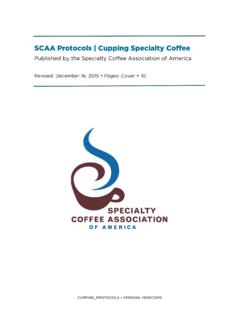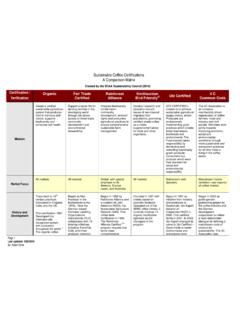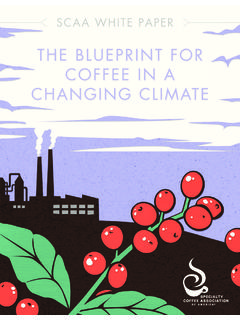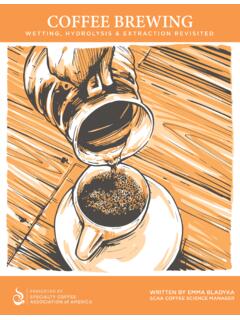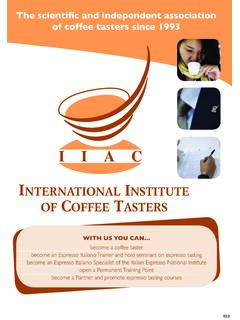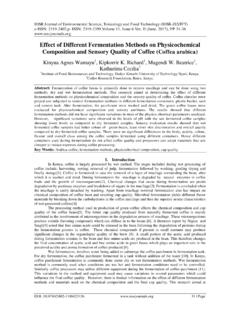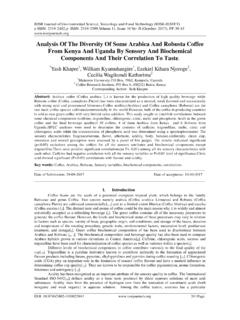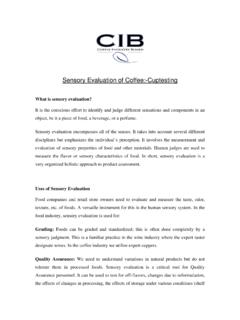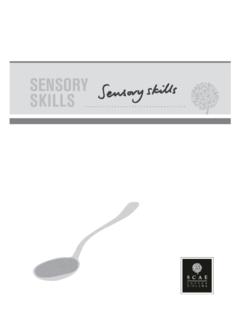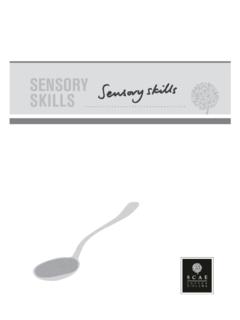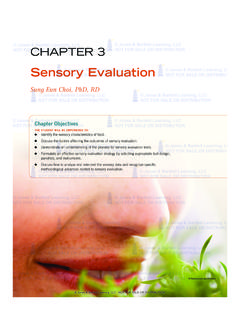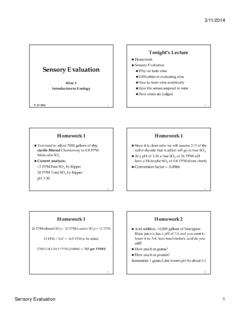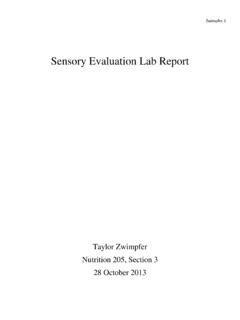Transcription of SCAA Protocols | Cupping Specialty Coffee
1 CUPPING_PROTOCOLS VERSION: 16 DEC2015 SCAA Protocols | Cupping Specialty Coffee Published by the Specialty Coffee Association of America Revised: December 16, 2015 Pages: Cover + 10 CUPPING_PROTOCOLS VERSION: 07 DEC2015 2 of 10 Purpose The Technical Standards Committee of the Specialty Coffee Association of America (SCAA) recommends these standards for Cupping Coffee . These guidelines will ensure the ability to most accurately assess the quality of the Coffee . Necessary Equipment Roasting Preparation Environment Cupping Preparation Sample Roaster Well Lit Balance (Scale) Agtron or other color reading device Clean, no interfering aromas Cupping glasses with lids Grinder Cupping tables Cupping spoons Quiet Hot water equipment Comfortable temperature Forms and other paperwork Limited distractions (no phones, etc.) Pencils and clipboards ! Cupping Glasses | Cupping vessels shall be of tempered glass or ceramic material.
2 They shall be between 7 and 9 fluid ounces (207 ml to 266 ml), with a top diameter of between 3 and inches (76 - 89 mm). All cups used shall be of identical volume, dimensions and material of manufacture, and have lids. Sample Preparation ! Roasting: ! The sample should be roasted within 24 hours of Cupping and allowed to rest for at least 8 hours. ! The roast level for Cupping shall be measured between 30 minutes and 4 hours after roasting using Coffee ground to the SCAA Standard Grind for Cupping and be measured on Coffee at room temperature. The Coffee shall meet the following measurements with a tolerance of units: ! Agtron Gourmet : ! Agtron Commercial : CUPPING_PROTOCOLS VERSION: 07 DEC2015 3 of 10 ! Colortrack: ! Probat Colorette 3b: ! Javalytics: same as Agtron measurement using either Gourmet or Commercial scales ! Lightells: same as Agtron measurements using Gourmet scale !
3 The roast should be completed in no less than 8 minutes and no more than 12 minutes. Scorching or tipping should not be apparent. ! Sample should be immediately air-cooled (no water quenching). ! When they reach room temperature (app. 75 F or 20 C), completed samples should then be stored in airtight containers or non-permeable bags until Cupping to minimize exposure to air and prevent contamination. ! Samples should be stored in a cool dark place, but not refrigerated or frozen. ! Determining Measurements: ! The optimum ratio is grams of Coffee per 150 ml of water, as this conforms to the mid-point of the optimum balance recipes for the Golden Cup. ! Determine the volume of water in the selected Cupping glass and adjust weight of Coffee to this ratio within +/- .25 grams. ! Cupping Preparation: ! Sample should be ground immediately prior to Cupping , no more than 15 minutes before infusion with water.
4 If this is not possible, samples should be covered and infused not more than 30 minutes after grinding. ! Samples should be weighed out as WHOLE BEANS to the predetermined ratio (see above for ratio) for the appropriate cup fluid volume. ! Grind particle size should be slightly coarser than typically used for paper filter drip brewing, with 70% to 75% of the particles passing through a Standard size 20 mesh sieve. At least 5 cups from each sample should be prepared CUPPING_PROTOCOLS VERSION: 07 DEC2015 4 of 10 to evaluate sample uniformity. ! Each cup of sample should be ground by running a cleansing quantity of the sample through the grinder, and then grinding each cup's batch individually into the Cupping glasses, ensuring that the whole and consistent quantity of sample gets deposited into each cup. A lid should be placed on each cup immediately after grinding. ! Pouring: ! Water used for Cupping should be clean and odor free, but not distilled or softened.
5 ! Ideal Total Dissolve Solids are 125-175 ppm, but should not be less than 100 ppm or more than 250 ppm. The water should be freshly drawn and brought to approximately 200 F (93 C) at the time it is poured onto the ground Coffee . *Temperature needs to be adjusted to elevation ! The hot water should be poured directly onto the measured grounds to the rim of the cup, making sure to wet all of the grounds. The grounds to steep undisturbed for a period of 3-5 minutes before evaluation . Sample evaluation Sensory testing is done for three reasons: ! To determine the actual sensory differences between samples ! To describe the flavor of samples ! To determine preference of products No one test can effectively address all of these, but they have common aspects. It is important for the evaluator to know the purpose of the test and how results will be used. The purpose of this Cupping protocol is the determination of the cupper s perception of quality.
6 The quality of specific flavor attributes is analyzed, and then drawing on the cupper s previous experience, samples are rated on a numeric scale. The scores between samples can then be compared. Coffees that receive higher scores should be noticeably better than coffees that receive lower scores. CUPPING_PROTOCOLS VERSION: 07 DEC2015 5 of 10 The Cupping Form provides a means of recording important flavor attributes for Coffee : Fragrance/Aroma, Flavor, Aftertaste, Acidity, Body, Balance, Uniformity, Clean Cup, Sweetness, Defects, and Overall . The specific flavor attributes are positive scores of quality reflecting a judgment rating by the cupper; Defects are negative scores denoting unpleasant flavor sensations; the Overall score is based on the flavor experience of the individual cupper as a personal appraisal. These are rated on a 16-point scale representing levels of quality in quarter point increments between numeric values from 6 to 9.
7 These levels are: Quality Scale (Good) (Very Good) (Excellent) (Outstanding) Theoretically the above scale ranges from a minimum value of 0 to a maximum value of 10 points. The lower end of the scale is below Specialty grade. ! evaluation Procedure | Samples should first be visually inspected for roast color. This is marked on the sheet and may be used as a reference during the rating of specific flavor attributes. The sequence of rating each attribute is based on the flavor perception changes caused by decreasing temperature of the Coffee as it cools: Step #1 Fragrance/Aroma ! Within 15 minutes after samples have been ground, the dry fragrance of the samples should be evaluated by lifting the lid and sniffing the dry grounds. ! After infusing with water, the crust is left unbroken for at least 3 minutes but not more than 5 minutes. Breaking of the crust is done by stirring 3 times, then allowing the foam to run down the back of the spoon while gently sniffing.
8 The Fragrance/Aroma score is then marked on the basis of dry and wet evaluation . CUPPING_PROTOCOLS VERSION: 07 DEC2015 6 of 10 Step #2 Flavor, Aftertaste, Acidity, Body, and Balance ! When the sample has cooled to 160 F (71 C), in about 8-10 minutes from infusion, evaluation of the liquor should begin. The liquor is aspirated into the mouth in such a way as to cover as much area as possible, especially the tongue and upper palate. Because the retro nasal vapors are at their maximum intensity at these elevated temperatures, Flavor and Aftertaste are rated at this point. ! As the Coffee continues to cool (160 F - 140 F), the Acidity, Body and Balance are rated next. Balance is the cupper s assessment of how well the Flavor, Aftertaste, Acidity, and Body fit together in a synergistic combination. ! The cupper s preference for the different attributes is evaluated at several different temperatures (2 or 3 times) as the sample cools.
9 To rate the sample on the 16-point scale, circle the appropriate tick-mark on the Cupping form. If a change is made (if a sample gains or loses some of its perceived quality due to temperature changes), re-mark the horizontal scale and draw an arrow to indicate the direction of the final score. Step #3 Sweetness, Uniformity, and Cleanliness ! As the brew approaches room temperature (below 100 F) Sweetness, Uniformity, and Clean Cup are evaluated. For these attributes, the cupper makes a judgment on each individual cup, awarding 2 points per cup per attribute (10 points maximum score). ! evaluation of the liquor should cease when the sample reaches 70 F (21 C) and the Overall score is determined by the cupper and given to the sample as Cupper s Points based on ALL of the combined attributes. Step #4 - Scoring ! After evaluating the samples, all the scores are added as describe in the Scoring section below and the Final Score is written in the upper right hand box.
10 CUPPING_PROTOCOLS VERSION: 07 DEC2015 7 of 10 Individual Component Scores The attribute score is recorded in the appropriate box on the Cupping form. On some of the positive attributes, there are two tick-mark scales. ! The vertical (up and down) scales are used to rank the intensity of the listed sensory component and are marked for the evaluator s record. ! The horizontal (left to right) scales are used to rate the panelist s perception of relative quality of the particular component based upon their perception of the sample and experiential understanding of quality. Each of these attributes is described more fully as follows: ! Fragrance/Aroma | The aromatic aspects include Fragrance (defined as the smell of the ground Coffee when still dry) and Aroma (the smell of the Coffee when infused with hot water). One can evaluate this at three distinct steps in the Cupping process: (1) sniffing the grounds placed into the cup before pouring water onto the Coffee ; (2) sniffing the aromas released while breaking the crust; and (3) sniffing the aromas released as the Coffee steeps.

